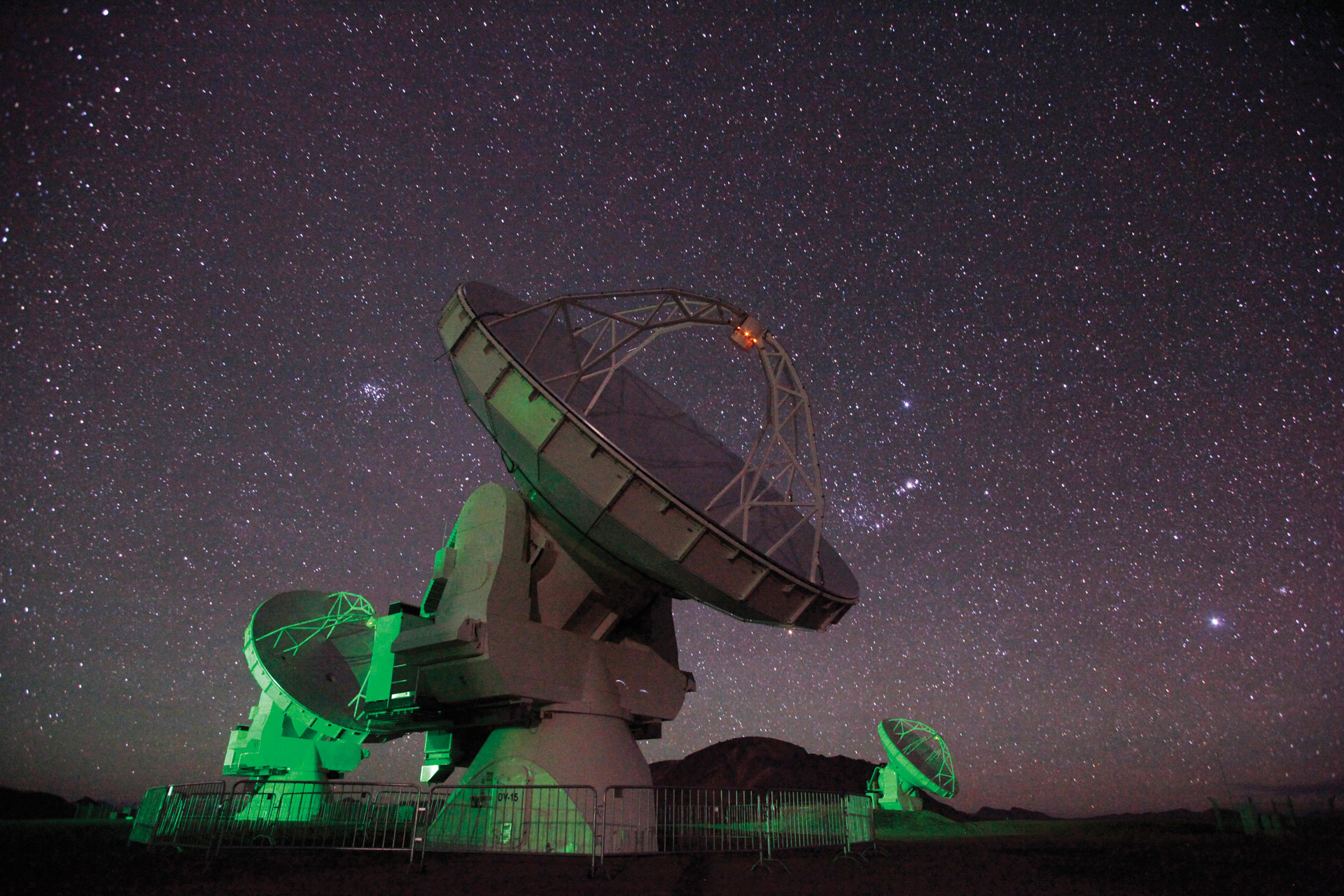Using a powerful radio astronomy observatory in Chile, an international team of astronomers have observed the formation and entwined motions of a massive binary star system, providing new understanding of how this common type of star comes together.
Binary stars, like the name implies, are two stars in the same system that orbit around a common center of mass, due to their mutual gravity. They are twins, in that they form together from the same interstellar cloud, but are distinct entities that sometimes eventually merge into massive stars. Most stars in the Milky Way have a binary companion (though our sun does not).
The finding, published this week in the journal Nature Astronomy, provides strong evidence that the two sibling stars under study formed as the result of the fragmentation of a dense, spiraling gaseous disk of dust.

ALMA image of the star-forming region studied by UVA astronomer Jonathan Tan. The massive binary system is dancing at its center. (Photo courtesy ALMA (ESO/NAOJ/NRAO); RIKEN, Zhang et al.)
“Massive stars are important throughout the universe, including for producing the heavy elements that make up our Earth and our own bodies, but their formation mechanism is literally shrouded in mystery, being so deeply embedded in dusty clouds,” said Jonathan Tan, an astronomer at the University of Virginia and co-author of the paper.
Unlike our solitary sun, many star systems, particularly massive star systems, form in pairs. But questions remain about how these binary systems form and evolve: Are the stars born together from a common spiraling gas disk at the center of a collapsing cloud, or do they pair up later by chance encounters in a crowded star cluster?
Answering this question has been difficult because the early-forming stars of these systems are enveloped in thick clouds of gas and dust. However, the study’s astronomers used a powerful radio astronomy observatory in Chile called ALMA – the Atacama Large Millimeter/submillimeter Array, which allows observations through thick clouded regions of the universe.
Longer millimeter-wavelength light is able to pass through the dust, enabling ALMA to observe star-forming regions in exceptional detail. The new observations show that even during early-stage development, the cloud contains both a massive “primary” central star and another “secondary” high-mass star.
The studied system (known as IRAS07299-1651) is located about 5,500 light-years from Earth. The finding shows that the two protostars are quite far apart – about 180 astronomical units, or about six times the distance from the Sun to Neptune, but because the system is very distant, distinguishing the separate features of the binary star is difficult. The new ALMA data show the stars orbit each other about once every 600 years and they have a combined mass of at least 18 times that of our sun.
“It’s exciting to see these massive stars dancing playfully around each other as they emerge into the galaxy,” Tan said. “Earlier generations of stars like these, exploding at the ends of their lives as supernovae, gave us the calcium in our bones and the iron in our blood and allowed life as we know it to exist. Now this life is appreciating the continued cycle of birth and death in the universe and our deep connection to it.”
Media Contact
Article Information
March 20, 2019
/content/astronomers-peer-through-dust-binary-star-formation

